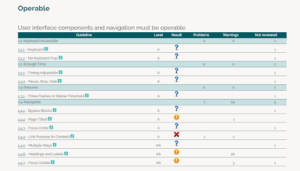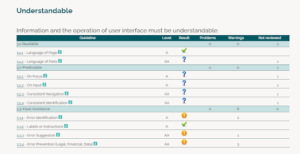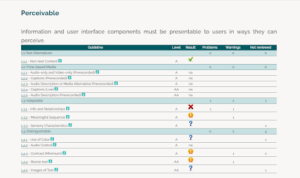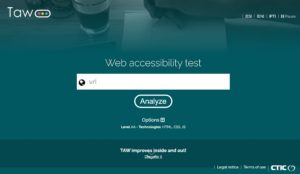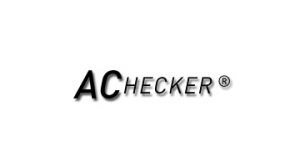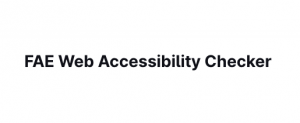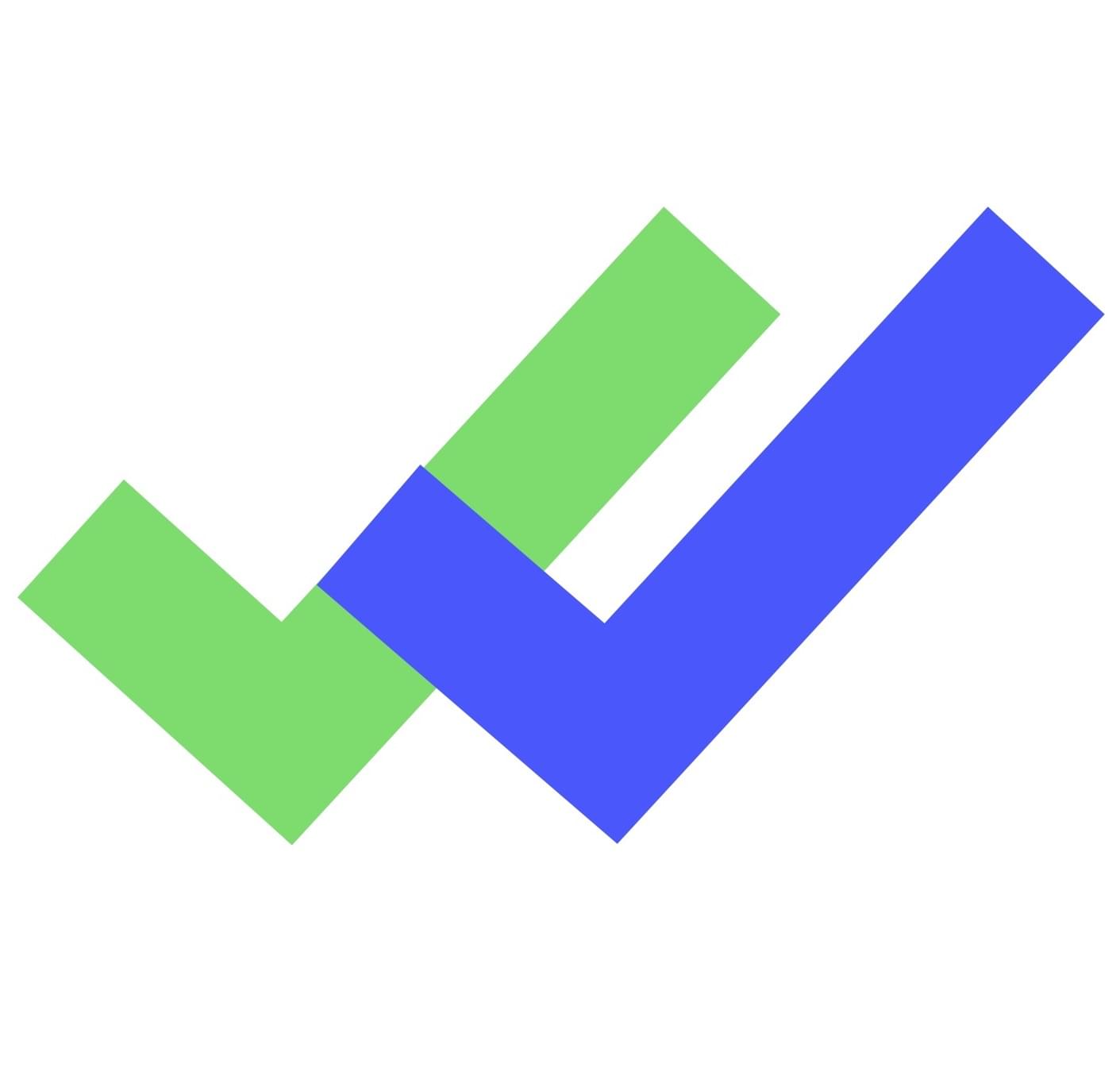TAW’s accessibility check is one of the fastest we have seen. It completed an audit in under twenty seconds when we conducted demo testing. As soon as the test rounded off, a summary of the scan pops up under three segments: (a) Problems (b) Warnings (c) Not reviewed. Each of these segments carries additional information on the total number of issues under it, including the number of WCAG success criteria the violation had occurred. For example, 40 Problems, in 5 success criteria; 70 Warnings in 8 success criteria; and 15 Not reviewed in 30 success criteria. For errors tagged as Problems, they are those that require corrections. Warnings require further review and a human decision. While Not Reviewed issues are beyond the scope of the system and, thus, require full manual attention.
Following the general guidelines of the World Content Accessibility Guidelines for accessibility, issues are classified under Perceivable, Operable, Understandable, and Robust. According to the WCAG, for content to be deemed accessible, it must be perceivable. And by perceivable, it means that website owners and content creators must ensure that the user interface component and web content are presented to users in a way that end-users can conveniently perceive it. As for being operable, this refers to the ease with which end-users, especially individuals with disabilities, navigate the website. Understandable means that users can understand the information and user interface on the website. And, finally, robust refers to the extent to which content is reliably translatable by assistive technologies.
Requesting for the audit report in your mail gives you access to more detailed information about the scan. The email version of the report is more comprehensive and actionable. In this “Analysis Information,” as it is titled, issues are listed in five columns or tabs, which are Tipology, Checking, Techniques, Result, Problems, and Line numbers. By many standards, TAW’s evaluation report is one of the most comprehensive. Under Tipology, it describes the issue in terms of its type (where text or non-text violations such images). The next column, “Checking,” describes the real violation in precise terms ( e.g., images without the “alt” attribute). Still, on the same issue, the next column states the aspect of the WCAG that applies to this issue (this is what is referred to as “technique”). Next to this is the “Result” of the item against the accessibility standard (either Problematic and in need of urgent attention, or Warning and requires human resolution, or Not Reviewed and reserved for manual attention). The “Problems” column states the number of times such issues reoccur throughout the page. This feature is similar to Siteimprove, which equally states the number of occurrences of a given issue. Last but not least is the column indicating the code location of the issue under the label “Line problem.”
